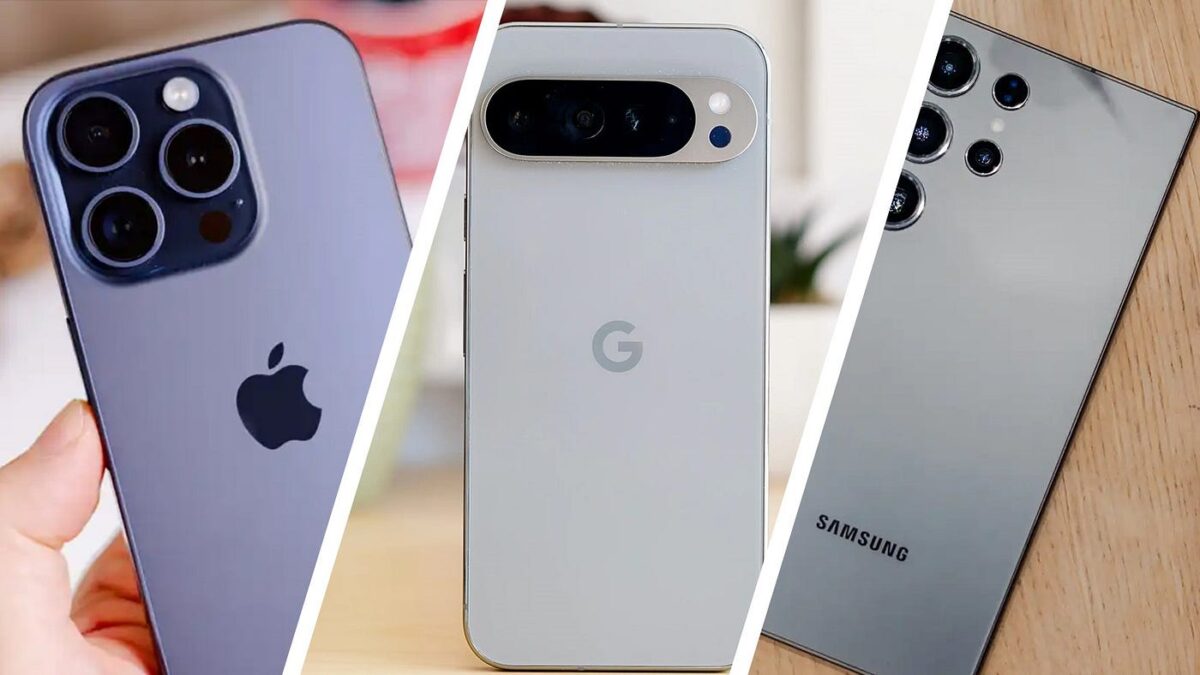Google Pixel 9 Is Being Sold At Double The Cost Of Its Production!
Smartphone prices have reached at an unprecedented high and it will only get worse. Google is selling its flagship Pixel 9 at almost a lakh!

A fresh revelation that has left the tech world talking revealed that the cost of making Google’s Pixel 9 Pro is around $406 or Rs 34,000—not much more than half of what you’d pay retail for the device. Such a wide gap between the prices is not exclusively a Google phenomenon, it is rather a normal occurrence in the smartphone market these days.
Similarly, while the manufacturing cost for Apple’s iPhone 16 Pro is a mere $568(Rs 47,800), there are huge gaps between the manufacturing cost and the retail price. This marks a continuation of an event chain that began in 2017 when Apple’s iPhone X jumped the barrier of reaching $1,000 for smartphones.
The Reality Of Cost Of Production
Basic Material and Assembly Costs – Flagship smartphones seem to play an interesting game of cost distribution. For the Pixel 9 Pro, the $406 in material and assembly costs break down into some of the most expensive components for the phone: a Tensor G4 chipset that will cost $80, a Samsung-made M14 display for $75, and camera components for $61. These, though expensive, are only a fraction of the final retail price paid, which is around $999 or almost a lakh!
 Similarly, the production cost of Apple’s iPhone 16 Pro tells a similar tale. The M14 display costs $110, the camera parts cost $91, and the A18 Pro chip costs $135. This cost structure is very different from what it was in 2017 when flagship phones sold closer to $742 in a proportionally much lower cost-of-production model.
Similarly, the production cost of Apple’s iPhone 16 Pro tells a similar tale. The M14 display costs $110, the camera parts cost $91, and the A18 Pro chip costs $135. This cost structure is very different from what it was in 2017 when flagship phones sold closer to $742 in a proportionally much lower cost-of-production model.
Market Concentration And Industry Change
Since 2015, the smartphone market has been characterized by consolidation. According to statistics from IDC, the total market share of the top five vendors has grown from 53.8% in 2015 to 66.8% in 2018. This makes giants like Apple, Samsung, and Google quite powerful in pricing and also increases barriers for others entering the market.
Pure online retail has become omnichannel distribution, and consolidation largely occurred during this period. A good example is how Xiaomi entered physical retail in China in 2016, with 331 stores in the country. The process has made it difficult for new entrants in the market, as it will require tremendous capital and operational acumen to maintain a physical presence.
Let’s Take A Look At The Evolution Of The Smartphone Market
 Growth Era(2009-2014)
Growth Era(2009-2014)
During this phase, the market grew at double-digit rates. The manufacturers focused on gaining share through reasonably priced yet compelling phones and planned to build the brand name before introducing more profitable models.
Transitional Period(2014-2017)
Growth began to slow down, and the smartphone’s primary positioning was as the centrepiece of the smart home ecosystem. Most firms continued business at a loss, hoping that breakthrough developments in complementary technologies might someday turn the corner.
The Premium Era(2017-Present)
With market maturation, the focus of manufacturers changed from market share to profit gains. Apple’s iPhone X pushed the price ceiling to a high of $999, which paved the way for others in the same direction. According to an IDC report, consumers were willing to pay 10.3% more for flagship phones in 2018 compared to what they paid in 2017. And this pace has only been increased.
Beyond Manufacturing: The Hidden Costs
The actual cost of bringing a smartphone to the market is much higher than it is to produce one. R&D has skyrocketed with companies putting in chip design work, high-end camera systems, and other display innovation.
Marketing costs have also become quite high as smartphones progress from a communication device to a lifestyle statement.
The Premium for Innovation – Things have rapidly changed since 2017 in what constitutes a “standard” feature set. What used to be premium to differentiate- the narrow bezels, notched displays, and even dual-lens cameras- is now the bare minimum. Manufacturers have, therefore, had to push features further up the cost of premiumization, from sophisticated AI capabilities to foldable displays.
 The Software and Services Spend – Modern smartphones have software that is living and breathing. Hence, it constantly requires development and after-sales support. When Google declares that it will give its Pixel several years of software updates, or Apple keeps its iOS so pristine, it is actually allocating costs for years to come, and those costs must be accounted for in the price tag of the smartphone. And that is a pretty significant departure from the old-school hardware business model.
The Software and Services Spend – Modern smartphones have software that is living and breathing. Hence, it constantly requires development and after-sales support. When Google declares that it will give its Pixel several years of software updates, or Apple keeps its iOS so pristine, it is actually allocating costs for years to come, and those costs must be accounted for in the price tag of the smartphone. And that is a pretty significant departure from the old-school hardware business model.
The Future of Smartphone Pricing – Going forward, there appears to be little hope that the gap between manufacturing costs and retail prices is going to close. In the case of premium products like Google Pixel, the bull run continues to rule the roost as manufacturers add one more unique function to make consumers go ga ga for it. Thus, in the case of Apple, the gross margin percentage on the iPhone X happened to be lower than the profit margin percentage on the iPhone 8 at a higher price.
The future Of Smartphone Pricing Will Appear To Split On Two Tracks
 Premium Segment: High price tags will continue to be commanded by flagship models, which will later be justified with high levels of customization, brand prestige and solid ecosystem integration.
Premium Segment: High price tags will continue to be commanded by flagship models, which will later be justified with high levels of customization, brand prestige and solid ecosystem integration.
Mid-range segment: Standardized parts as well as ODM partnerships will continue to sustain profitability at more accessible price points.
Manufacturers have seen steadily increasing cost pressure, though especially on the more innovative features and custom components. This should make it increasingly tough for flagships to charge a premium; it can even go higher as consumers tend to be willing to pay a premium for the increasingly primary computing platforms, which are these devices.
However, while that gap is huge, it also reflects the much tougher reality of the modern smartphone business – It’s not just about a profit margin anymore, it is also about an ecosystem of innovation, support, and continuous improvement that has become important to the smartphone experience. The value that consumers place on this complete package, including the combination of hardware, software, service, and prestige brand, is likely to keep such a model in place and continue to amend it over time.




